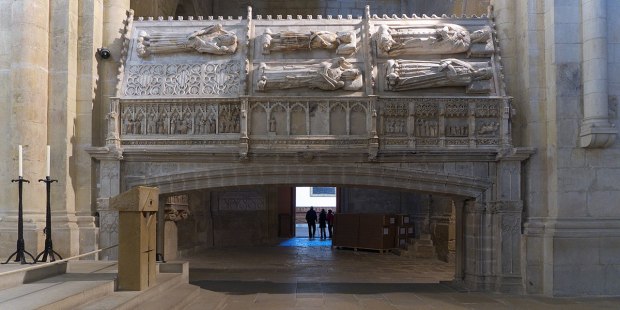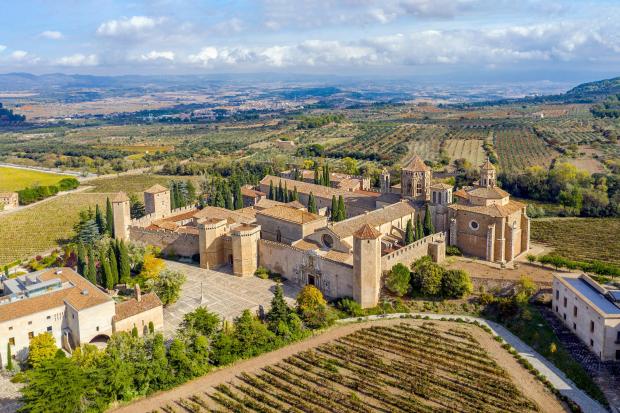At the very foot of the Prades Mountains in Catalonia, Poblet Abbey preserves an important part of the legacy of the Cistercian Order in Spain. Founded in 1151 by French monks, the abbey has been a cornerstone of faith, history, and culture for over eight centuries for both locals and visitors from all over the world.
The primary architect of one of the many restorations and expansions of the monastery, Arnau Bargués, crafted a serene and imposing structure that keeps on seducing pilgrims and tourists alike.
Poblet Abbey forms one vertex of the renowned Cistercian triangle in the region, along with Vallbona de les Monges and Santes Creus. This trio of monasteries played an important role in consolidating power in Catalonia during the 12th century. Being the royal pantheon of the Crown of Aragon, Poblet Abbey became a sacred resting place for the region’s rulers, beginning with James I of Aragon.

The abbey’s royal pantheon holds a special place in history, featuring elaborate alabaster statues atop the tombs. These statues, with lions at the feet of kings and dogs at the feet of queens, signify the noble status of those interred within. Peter IV of Aragon, who reigned from 1319 to 1387, decreed that all future Aragonese kings be buried at Poblet – a tradition maintained by all but one ruler.
During its peak, Poblet Abbey was a bustling center of monastic life. Over 300 monks resided within its walls, and lay brothers managed its extensive agricultural lands. The monastery’s buildings spanned approximately 12,000 square meters – evidence of its significant influence and affluence.

However, the monastery’s fortunes changed in the 19th century. The Ecclesiastical Confiscations of Mendizábal in 1835 led to the secularization and closure of Poblet Abbey. It suffered extensive damage, looting, and fire, reducing the once-thriving monastic community to ruins. Even the royal tombs were desecrated, and the remains of the monarchs were temporarily relocated to the Cathedral of Tarragona.
Revival came in 1940 when Italian monks of the Cistercian order began restoration efforts. Today, Poblet Abbey is a vibrant monastic community, home to around 30 monks. The abbey belongs to the Cistercian Congregation of the Crown of Aragon, with its abbot serving as the ex officio chairman.
Visitors to Poblet Abbey marvel at its architectural grandeur, steeped in centuries of history and spirituality. The abbey still preserves the traditions of the Cistercian order.










